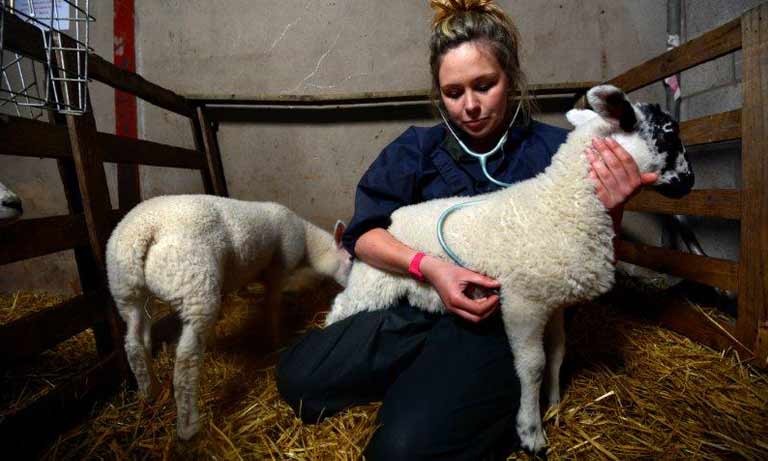Sunscreen, shade and sunset walkies: Vets issue urgent heatwave advice as temperatures set to rival 2018 record
15 Jul 2022
To help improve animal welfare standards for sheep, leading vets recommend that castration of ram lambs should only be carried out when there are no suitable alternatives available and that a close working relationship between vets and farmers is key in decision making on procedures such as castration and tail docking.

To help improve animal welfare standards for sheep, leading vets recommend that castration of ram lambs should only be carried out when there are no suitable alternatives available and that a close working relationship between vets and farmers is key in decision making on procedures such as castration and tail docking.
In a new position launched today (26 February) as part of the Animal Welfare Strategy, the British Veterinary Association (BVA) and Sheep Veterinary Association (SVS) say that in the absence of licensed local anesthesia and analgesia products in the UK, efforts should be made to reduce the need for painful husbandry procedures, especially where there are suitable alternative options available.
They say that to reduce the need for castration, farmers and vets should work closely and tailor their farm animal health and welfare plans where possible, to focus on getting their male flock to reach slaughter weight prior to sexual maturity and on preventive measures to separate young rams and ewes.
For centuries, castration has been considered the go-to, routine husbandry procedure to avoid unwanted pregnancies, ram taint (the tainting of meat which can cause an unpleasant taste) and aggressive behaviours, but the veterinary bodies point to evidence showing that some of the alternative options may have both animal welfare and economic benefits.
“We know anecdotally that a number of farmers are successfully reducing these procedures in their flocks by using alternative measures. It is about striking a balance between a need for procedures such as these and the potential for them to cause pain.”
Recognising the devastating health and welfare implications of fly strike, BVA and SVS recommend preventive strategies to minimise this condition as well as ways to reduce the welfare risks associated with the act of tail-docking. Examples include making sure that the procedure occurs after ewe and lamb bonds have been established to avoid ‘mis mothering’. As with any intervention, tail docking should only occur after it is agreed under a Veterinary Flock Health Plan.
“The awareness and implementation of welfare improvements should underpin all aspects of sheep farming.
As an association it is entirely appropriate for us to question practices that impact upon welfare especially when we consider the large numbers of individual animals that are affected.
“With the evolution of our understanding of welfare we believe that discussion between the farm vet and the farmer is essential in formulating the management of the castration of lambs and the removal of tails. However, the limitations on the availability of licenced products to minimize the discomfort that can occur due to these procedures makes this policy aspirational.”
“It has been great to work with the divisional specialists to shine a spotlight on sheep with the hope that we can help navigate some of the welfare implications associated with routine procedures such as castration and tail docking and, ultimately reduce their use.
“In no way would we want to be seen to tell the farming community how to do their job but instead encourage vets to work really closely with farmers on their animal health and welfare management plans. That helps us to consider all of the options out there and frame castration and tail-docking as the serious procedures that they are, meaning that they are used as more of a last resort, rather than first.”
Get tailored news in your inbox and online, plus access to our journals, resources and support services, join the BVA.
Join Us Today